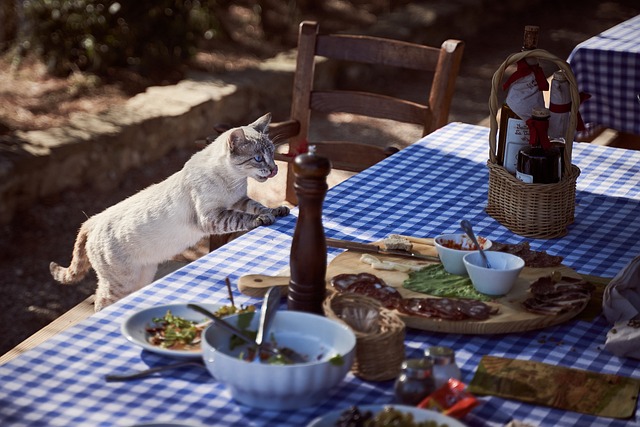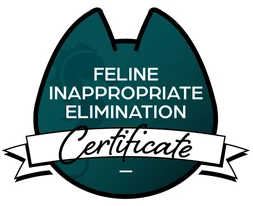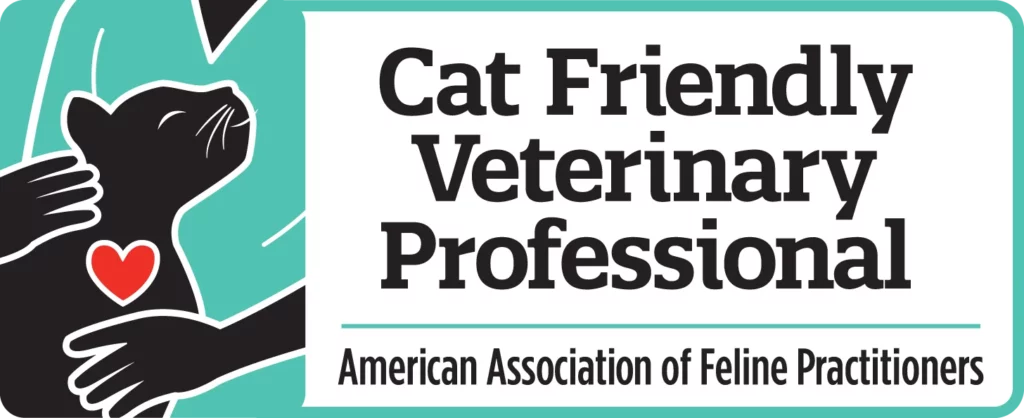If you have a cat, chances are they’ve let you know at one point in time that they’ve never been fed ever. It may be at the crack of dawn when they haven’t eaten overnight or right before an evening meal, but they are starving. While it isn’t necessarily abnormal for a cat to try to get food, there are times when begging for food can be abnormal or when it can become distressing for you.
If your cat is on a weight loss diet as directed by your veterinarian, the begging can intensify. It may take the form of destructive or annoying behaviors besides just meowing. If you give in and feed them, you will only encourage the behavior, and aversive methods will only create stress. Plus, aversive methods typically won’t deter a hungry cat from the possibility of getting food as food is extremely motivating.
Thankfully, there are things you can do to stop your cat from begging for food once you’ve met with your veterinarian to rule out potential medical causes of them begging for food as changes in your cat’s eating habits can be cause for concern. This is even true if your cat is on a weight loss plan. You don’t have to risk your cat’s health by letting them stay overweight just because they are making a lot of noise!
Disclaimer: This blog post is for general informational purposes only and will not apply to every cat. In some situations, your veterinarian may recommend something different than what I suggest. This blog does not replace or overrule veterinary advice from a licensed veterinarian so please listen to your veterinarian as they likely have a very good reason for making their recommendations.
Make Changes Intentionally
One of the biggest problems I see when working with clients whose cats are on a weight loss plan is that the plan is implemented haphazardly or too quickly. You want to be very intentional about any reductions in your cat’s food as you can’t really expect a cat to be hungry and not be upset about it. It’s best to be methodical about the way you reduce their food intake and do so slowly. A gradual reduction in food intake may go unnoticed or be less upsetting to your cat than one that is done too rapidly as it allows them to adapt to the dietary change.
While your veterinarian can offer specific advice on what to do, one method to try is to look at the manufacturer’s feeding guidelines and compare them to what you are currently feeding your cat. Start with the suggested amount for their current weight and reduce it slightly. As they gradually begin to shed the excess weight, you can adjust the amount you’re feeding slightly downward until your cat reaches their ideal weight. If you notice they become distressed after a reduction in food, go a bit slower.
Always listen to your vet about what specifically you should be doing. If your cat isn’t tolerating the weight loss plan they suggest, ask if there’s a way you can adjust it to go slower. Your vet may be able to make an adjustment to the plan or provide you with some suggestions on what to do if there is a reason they can’t adjust their diet any slower.
Slow Down Feeding
Cats hunt small animals like mice and birds. In nature, they have to catch multiple small prey every day to survive. Because of this, it’s more natural for cats to have multiple small meals spread throughout the day. Rather than feeding your cat in two larger meals, break them apart. Depending on your schedule and when you can feed them, doing at least 4 or 5 meals per day may be a better idea if they are spread out. This keeps your cats from becoming hungry as quickly and reduces the need for them to beg.
A similar strategy that you can combine with multiple small meals involves using either a slow feeder or a food puzzle. Some options require your cat to eat around an obstacle while others require them to complete a task or series of different tasks to get the tasty food inside. This is not only a great form of mental stimulation for your cat, but it also forces them to eat a bit slower so they think they’re eating more than they actually are.
Use Training To Slow Down Your Cat
Another option is using training to deliver part of a meal to the cat. They’ll naturally be more motivated to train as they’ll be hungry already and you will be giving them their meal in a more controlled, deliberate manner which helps them feel fuller for a bit longer. They’ll have fun and you’ll have fun as well! If you’re looking to get started, a clicker training kit can help guide you with how to begin or you can set up a training session with me.
An important caveat to this one: You should never purposefully withhold food from your cat to increase motivation for training so make sure you’re doing the training when they’d naturally be hungry anyway. It’s also important that if your cat doesn’t want to participate in training, they still get fed. Don’t make their meal completely contingent upon their participation in training as it’s not fair to without a basic need from your cat if they don’t feel like high-fiving you that day.
Use An Automatic Feeder To Spread Meals Out
I’m a big fan of automatic feeders to make sure your cat gets fed consistently and to make their lives predictable, but I also love them as you can generally control how much food you give them. That allows your cat to get small meals during the day without much effort on your part. This can be especially helpful if you aren’t home during the day. I have one from PetLibro and have found it to be a great product so far.
Add Bulk To Meals
Have you ever eaten a rice cake? They’re pretty big, but even if you ate a whole bag of them, there aren’t a ton of calories. You’ll likely be full before you even can finish the bag.

We can apply the same thing to cats’ diets by adding some bulk to their diet (assuming your vet approves). It’s worth reaching out to your vet to ask if there is anything you could add to their food that would make it have more volume without increasing their calories. They may even suggest transitioning to a weight loss food that is naturally bulky but doesn’t have a ton of calories.
One strategy that works well for a lot of cats is growing cat grass. Even if you don’t have a green thumb, it’s pretty easy to grow. You can even get a fun umbrella-shaped grow light (I have a few of these) if you don’t typically have a lot of natural light getting in. Start some seeds a few days apart and replant them as your cat munches on them so you always have some fresh grass available.
The Most Important Thing To Stop Your Cat From Begging For Food
While the solution for every cat will be different, the most important things you can do to stop your cat from begging are working with your vet to make sure your cat is getting enough food and going slowly with any changes. Beyond that, you also want to make sure you don’t give in when your cat does beg. If your cat gets food sometimes, you’re training them if they beg for longer then eventually you’ll give in.
You may need to slow down their weight loss plan or make sure adjustments, but by making every step of the plan intentional and with your cat’s needs in mind, you can be successful.
And really, go the automatic feeder route if needed.










